https://brunch.co.kr/@bearnut/21
흔히 말하는 ‘베트남 전쟁’이란 1955년 11월 1일부터 1975년 4월 30일까지 사이에 벌어진 ‘제2차 인도차이나 전쟁’을 의미한다. 제2차 인도차이나 전쟁은 분단된 남북 베트남 사이의 내전임과 동시에 냉전 시대에 자본주의 진영과 공산주의 진영이 대립한 대리전이었다. 응오딘지엠이 쿠데타로 통치하고 있던 남베트남 정권은 부정부패와 실정, 불교도와 공산주의자들에 대한 탄압과 학살으로 이미 지지를 잃고 있었다. 남베트남에서는 불안정한 정권을 잡으려는 군부의 쿠데타와 민중들의 저항이 계속되고 있었다. 호치민이 지도하는 북베트남은 남베트남 안에 민족해방전선을 꾸려 유격대(베트콩)를 조직하고 남베트남 민중들과 함께 통일과 해방을 향해 나아가고 있었다. 남베트남군과 남베트남 민족해방전선 게릴라 사이의 내전은 본질적으로 정치 권력 투쟁으로 군사 교전은 부차적인 것이었다. 하지만 미국은 이를 이해하지도 않았고, 이해할 필요도 없었다.
미국은 한국전쟁 이후 냉전이 본격화되면서 분단된 베트남에서 공산주의 세력이 커져가는 걸 경계했고, 이에 자국의 국민들과 내전을 벌이고 있는 남베트남 정부를 지원하기 시작했다. 미국의 목표는 남베트남의 촌락 3분의 2를 사실상 통치하고 있는 남베트남 내 공산주의자들, 즉 베트콩을 제거해 남베트남 정부를 안정시키는 것이었다. 1964년 8월 2일, 영해를 침범한 미국 구축함과 교전한 ‘통킹만 사건’을 빌미로 미국은 베트남 전쟁에 본격적으로 참전한다.
베트남 전쟁의 시작이었던 통킹만 사건은 2003년부터 8년 동안 진행된 이라크 전쟁의 ‘대량살상무기’처럼 불분명한 전쟁명분이었다. ‘악의 축’ 이라크의 대량살상무기를 찾아내 무장 해제하자던 이라크 전쟁이 실제로는 석유와 중동 지배권을 위한 전쟁이었던 것처럼, 베트남 전쟁에 대한 미국의 개입은 냉전 체제의 일부에 불과했다. 1971년 뉴욕타임스가 미 국방부 관련 보고서(펜타곤 페이퍼스)를 입수하여 공개하면서 윤곽을 드러냈다. 뉴욕타임스는 당시 '펜타곤 페이퍼스'를 인용해 미국이 베트남전쟁에 개입하기 위해 통킹만 사건을 조작했다고 폭로하여 큰 파문을 불러일으켰다. 프랑스의 철학자 장 폴 사르트르는 이 전쟁을 일컬어 ‘더러운 전쟁(Dirty War)’라고 말했다. 미국은 도미노 이론에 따라 베트남의 공산화가 아시아 국가들의 공산화를 촉발할 것이라고 생각했다. 이른바 “자유세계의 수호”는 미국이 베트남 사태에 개입하는 유일한 명분이었다.
베트남 전쟁에선 북위 17도를 기준으로 분단된 남베트남에서 이뤄졌고, 남베트남 민족해방전선의 게릴라전과 북베트남 정규군인 베트남인민군의 정규전이 동시에 전개되었다. 1964년 8월 미국이 통킹만 사건을 구실로 개입함으로써 국제전으로 확대되었고, 1965년 미국, 대한민국 등이 지상군을 파병하였다. 이후 8년간의 전쟁 끝에 1973년 1월 프랑스 파리에서 평화 협정이 체결되어 그 해 3월 말까지 미군이 전부 철수하였고, 1975년 4월 30일 사이공 함락으로 북베트남이 무력 통일을 이뤄 1976년 베트남 사회주의 공화국이 선포되었다.
베트남 전쟁은 제공권을 장악한 압도적 군사력의 미군이 폭격과 공습, 포격, 수색 섬멸 작전 과정에서 네이팜탄과 같은 대량살상무기를 투하하고 고엽제 등 화학 무기를 사용하여 무차별적으로 민간인을 희생시킨 전쟁으로 알려져 있다. 미국의 기본 전술은 ‘탐색과 격멸(search & destroy)'이었다. 2차 대전에서 미군은 압도적인 군사력으로 이 전술을 활용했고, 베트남 전쟁에서도 이를 똑같이 적용하였다. 하지만 게릴라전을 앞세운 베트콩의 전술에 밀려 미군은 전혀 승기를 잡지 못했다. 이에 미군은 한국, 일본, 태국, 필리핀 등 동남아시아조약기구 국가들에 파병을 요청하였다.
우리나라로 치면 설날인 1968년 1월 30일, 북베트남은 ‘구정 대공세’를 일으킨다. 명절에 공세가 없을 것이라는 판단과 전격전이 일어나면 남베트남 민중들과 군인들이 호응할 것으로 예상했던 것이다. 초반에는 베트콩이 미군과 남베트남의 주요 시설을 빠른 시간 내에 점령했지만, 곧장 미군과 남베트남 국군에 의해 진압되었다. 이로 인해 남베트남 내 존속했던 베트콩이 궤멸 직전에 이른다. 하지만 미국 내 반전운동이 일어나는 등 국제 여론이 반전 여론으로 쏠리면서, 북베트남에게 전술적 승리 대신 전략적 승리를 가져왔다. 이 때문에 구정 대공세는 베트남 전쟁에서 베트남 민주공화국이 승리하는 결정적 원인이 되었다.
새롭게 미국 대통령이 된 닉슨은 “미국은 앞으로 베트남 전쟁과 같은 군사적 개입을 피한다”는 ‘닉슨 독트린’을 발표하여 남베트남 군이 스스로 영토를 방어하도록 만드는 ‘베트남화’ 정책을 펼친다. 닉슨은 여론을 반영하여 지속적인 철군을 약속하고, 소련 및 중국과 핵무기 감축을 약속하는 데당트를 하고 정전 협상을 준비하면서도, 협상에서 유리한 위치를 차지하기 위한 군사 개입을 계속했고 1972년 12월에는 10일 동안 히로시마 원폭의 5배에 해당하는 12만 톤의 폭탄을 북베트남 하노이와 하이퐁에 무차별적인 폭격을 가했다. 1973년 1월 15일 닉슨은 북베트남에 대한 공격을 중지한다고 발표하고, 1월 27일 “종전과 베트남의 평화 복원을 위한” 파리 강화 협정에 조인한다. 이후 1975년에 북베트남이 사이공을 함락하면서 베트남은 통일된다.
베트남 전쟁에서 사망한 민간인은 62만에서 200만, 그 중 베트남인은 96만에서 381만, 해외군 사망은 6만 5천으로 캄보디아·라오스에 이어진 내전 사망자까지 합치면 총 전사자가 129만에서 421만 명에 이를 것으로 예상되고 있다. 그 중 대부분은 연합군에 의한 민간인 학살이었다. 1968년 3월 16일 남베트남 미라이에서 발생하여 347명에서 504명을 미군이 학살한 것으로 추정되는 미라이 학살, 1968년 2월 22일 한국의 청룡 부대가 베트남 꽝남 성 디엔반 현에 위치한 하미 마을에 비무장 민간인 135명을 학살하고 가매장한 하미 학살, 1966년 12월 3일부터 6일까지 마찬가지로 청룡 부대에 의해 430명의 마을 주민이 학살된 빈호아 학살, 1968년 2월 12일 베트남 꽝남 성 디엔반 현 퐁니, 퐁넛 마을 주민들이 청룡부대에 의해 70여 명이 학살당한 퐁니·퐁늣 학살 등이 대표적이다.
‘한국군 파병’은 모두가 바라던 일이었나
한국은 1964년 9월 22일에 이동외과병원과 태권도 교관단 파견을 시작으로 베트남 전쟁에 참전했다. 이후 해병 제2여단 청룡부대, 육군 수도사단 맹호 부대, 육군 제9사단 백마 부대 등의 전투 부대와 비전투 부대를 파병하여 1973년 3월 23일 철수할 때까지 연인원 32만여 명이 참전해 평균 약 5만 명이 상시 주둔했다. 이는 연합군 내에서 미국(53만) 다음으로 많은 수의 파병이며, 3위인 타이는 1만 명을 파병했다. 한국군은 5천 명의 전사자와 1만 명의 부상자를 냈다. 미국의 전사자는 5만 명, 부상자가 30만 명, 타이는 350명, 1300명이었던 걸로 치면 많은 한국군이 베트남 전쟁에서 목숨을 잃었다.
흔히 베트남 파병은 미국의 요청에 의해 이뤄졌다고 알려져 있지만 박정희 정권은 5·16군사정변으로 집권한 1961년 케네디 대통령을 만나 미국이 원한다면 파병의사가 있다는 사실을 먼저 알려왔었다. 당시 미국은 중국과 소련을 자극할 것으로 예상해 이를 거절했으나, 월남전 상황이 악화되자 1964년 파병 요청을 하게 된다. 1965년 2월에 케네디를 승계한 미국 대통령 린든 존슨은 박정희를 미국으로 초청해 성대한 퍼레이드까지 해주었다. 이데올로기 전쟁으로 권력을 강화하고자 했던 이승만 대통령 역시 제1차 인도차이나 전쟁 때 파병의사를 밝힌 바 있었다. 당시 박정희 정권은 부정한 군부독재의 정당성을 미국으로부터 승인받을 필요가 있었고, 미국은 베트남 전쟁 병력을 얻기 위해 이를 승인했다.
베트남 전쟁 특수는 박정희 정권의 치적으로 여겨지기도 한다. 1965년에서 1972년까지 한국은 베트남전쟁으로 약 10억 3,600만 달러의 외화를 벌어들였다. 분명 베트남 전쟁을 통해 벌어들인 돈이 경제발전에 도움을 주었던 점도 일면 맞다. 하지만 이에 대한 반론도 많다. 가장 기본적으로 전쟁과 학살을 통한 국가적 이익의 획득에 대한 반대가 있을 것이다. 한국의 근대화와 경제발전은 국내에서는 자국 노동자들과 민중들의 희생으로, 국외에서는 베트남 국민들의 죽음으로 이루어졌다. 이때 크게 발달한 산업 중 하나가 군수 산업인 것 역시 이를 입증한다. 민주화를 억압하고 권력을 잡은 군부라는 부정한 정권의 문제 역시 연루되어 있다. 미군이 철수하는 1968년 이후 상황에서도 박정희는 정일권 국무총리를 닉슨에게 보내 “북베트남 지역에 군대를 배치하는 것도 고려하고 있다”고 전쟁 지속의 의지를 보였다. 베트남 파병이 안보와 직결된다는 주장도 엉터리였다. 북한은 북베트남을 지원하고자 대남 도발을 강화했다. 1968년 1월 북한 특수부대원이 청와대를 기습하려다 실패했고, 미국 정보함 푸에블로호가 북한 영해를 침범하려다 나포되었다. 비무장 지대의 소규모 교전은 1965-1966년 한 해 30-40건에서 1967-1968년에 400-500건으로 증가했다.
베트남 전쟁의 경제적 이익으로 돌아와보자. 10억 3,600만 달러 중 장병 송금이 19.6%, 파월 기술자들의 송금이 16%로 전체 1/3 이상이 ‘목숨을 걸고’ 벌어온 돈이었다. 전쟁 특수의 이익은 공평하지 않았다. 당시 참전군인이나 기술자들의 수당은 다른 나라에 비해 적은 편이었고, 오히려 특정 기업에 이익이 집중되었다. 대표적인 것이 땅콩 회항으로 유명한 ‘한진 그룹’과 ‘현대 건설’이다. 한진은 1억 646만 달러라는 막대한 사업 실적을 얻었고 이는 한국의 베트남 특수 전체의 10%에 해당한다. 현대처럼 베트남에 진출한 건설회사들은 항만·도로·기지 건설을 통해 66년부터 3년 동안 거의 5천 만 달러 수익을 올렸다. 그러나 이 실적의 대부분은 임금 갈취에 의한 것으로, 당시 기술자들은 주당 70시간 이상의 살인적 노동을 하면서 초과근무수당을 제대로 받지 못했다. 이에 분개한 노동자들이 한진 빌딩에 점거하고 불을 지른 유명한 사건이 바로 ‘칼 빌딩 방화 사건’이다.
베트남 특수의 또 다른 부정적 결과는 부동산 투기였다. 베트남에서 번 외화를 주체 못하는 기업과 부동산 개발로 정치자금을 만들려는 박정희 정권은 투기를 조장했다. 1960년대 말까지 논밭이었던 서울 강남은 1970년 경부고속도로 개통과 함께 개발되어, 압구정동 땅값은 63년에서 70년 사이 25배로, 신사동은 50배로 올라왔다. 벌어온 외화를 효율적으로 사용하지도 못했다. 몸집만 불린 기업들은 69년 이후에 부실기업 판정을 받고 우르르 도산 위기에 처했다. 이에 박정희 정권은 1972년 ‘8·3조치’를 통해 사체 이자를 원래 계약보다 낮춰서 채권자의 재산을 빼앗아 기업에 돈을 주는 특혜까지 주었다. 이들은 나중에 대기업으로 성장하게 되었다. 분명 베트남 특수는 존재했다. 미국 시장의 개방과 군수 생산 시설을 통한 중공업화는 1960년대 경제 성장과 1970년대 중공업화의 밑거름이 되었다. 하지만 일하고 죽어간 이들이 정당한 대가를 받는 일은 없었다. 32만 명의 한국군은 독립국가를 염원했던 베트남인들을 죽이고 땅과 마을 파괴했다. 그들만큼 가난했던 한국인들은 베트남에 가서 ‘돈 벌고 살기 위해’ 살인을 하고 전쟁 기계가 되었다.
박정희 정권이 파병을 추진하던 초기에 경제적인 이유는 부차적이었으나, 파병의 정당성 확보가 쉽지 않자 점점 더 경제적 이유를 부각했다. 초기에 강조하던 명분은 도미노 이론의 한국판인 ‘제2전선론’으로 제2의 한국전쟁에 대한 공포 심리와 이데올로기를 이용하거나, 한국전쟁 때의 은인인 미국에 은혜를 갚자는 ‘보은론’, 한국군 파병을 하지 않는다면 주한 미군이 베트남으로 파병된다는 ‘주한미군 철수론’이었다. (물론 미국은 ‘주한 미군 병력 유지’라는 약속을 어겼고, 1971년에는 미군 2만 명 철수를 완료해버렸다.) 박정희 정권이 정권 초기에 미국 몰래 화폐 개혁을 하는 등 경제적 자주 노선을 추구한 것 등으로 미루어볼 때 파병에는 박정희 군사 정권의 강한 질서에서 크게 한몫잡고 싶었던 소제국주의 야망에 대한 의지가 반영된 것이지 다른 것이 아니었다. 박정희는 밖으로는 긴장을 유지하면서 1968년 예비군을 창설하고 주민등록제도를 추진해 국민 통제를 강화했다. 국민교육헌장 암송을 교육 과정에 의무화시킨 때도 이때였다.
파병이 결정되자 당시 한국군의 가장 큰 걱정은 탈영이었다. 하루 60여 명의 도망병이 나오기 시작했다. 1960년대 말까지 파월 기피 탈영병을 잡으러 다니는 게 각급 소대장의 주된 임무였다. 장교들은 진급을 위해 전투 경험을 쌓는 것이 유리했으나, 사병들은 굳이 목숨을 걸고 싶을 리 없었다. 그래서 파병은 기본적으로 강제 차출 방식이었고, 자기 부대가 파병된다는 소식을 들으면 어차피 죽을 거 차라리 감옥에 가자는 것이 당시 사병들의 생각이었던 것이다. 형식적으로 파병이 자원의 형식을 갖추기도 했지만, 2004년 MBC ‘이제는 말할 수 있다’ 제작진의 조사에 따르면 65%라는 지원자 중 60% 이상은 실제로 지원하지 않았는데 지원한 경우거나 상관의 강압에 의해 자원서를 썼다고 말했다. 사병들이 베트남 파병을 수동적으로나마 받아들였다면 그 이유는 ‘돈’ 때문이었다. 베트남은 이념 때문에 가는 곳도 아니고 국익을 위해 가는 곳은 더더욱 아니었다. 박정희 정권이 미국과 체결한 1966년 ‘브라운 각서’를 주한 미국 대사 윌리엄 포터는 “한국 정부는 베트남의 5만 한국군을 ‘알라딘의 램프’로 생각하고 있다”고 미 국무부에 전문을 보냈다. 미국은 ‘싼 값’으로 한국군의 생명을 사서 베트남 전쟁에 썼고, 박정희는 그 생명을 담보로 미국으로부터 원하는 것들을 얻어냈다.
한국은 ‘민간인 학살’을 기억하고 있는가
한국군이 주로 주둔한 곳은 중부 4개 성(꽝남, 꽝응아이, 빈딘, 푸옌)로 한국군에 의한 민간인 희생이 가장 컸던 것 역시 이곳들이다. 한국군은 베트남 전쟁에서 한국군 전사자의 10배에 가까운 4만 여명의 베트남인을 사살했다. 이미 한국전쟁 때 국내 빨치산 소탕으로 게릴라전 대응에 능했던 한국군은 미국과 달리 ‘소탕과 확보(clear & hold)’ 전술을 택했다. 소규모 병력으로 촌락에 들어가 숨은 베트콩을 죽이고, 주민들을 회유하는 방식으로 효과를 본 것이다. 한국군의 전적이 ‘1:10 살상률’로 그 ‘용맹’을 자랑했던 것도, 또 그만큼 한국군 사상자가 많았던 것도 이 때문이었다. 더불어 악명높은 민간인 대량 학살 사건을 한국군이 일으킨 것도 어쩌면 여기서부터 시작되었다. 1970년대 초반 남베트남민족해방전선의 외교부장이 발표한 한국군의 공식적인 민간인 학살 건수는 약 3천 건에 이르며, 꽝남 성 30건에 4천 여 명, 꽝응아이 성 18건에 1,700여 명, 빈딘 성 8건에 1,581명, 푸옌 성 22건에 1,729명으로 희생당한 민간인 수만 9천 여 명 가까이 된다고 한다.
한국군은 대체로 미군이 폭격한 마을에 직접 들어가는 보병이었고, “보이는 것은 모두 베트콩”이라는 전술 지침을 가지고 있었다. 실제 당시 주베트남 한국군 사령관인 채명신이 내린 지침은 소탕과 확보 전술에 기초하여 “백 명의 베트콩을 놓치는 한이 있더라도 한 명의 양민을 보호하라”는 것이었다. 애초에 베트남 전쟁은 한국 자신의 전쟁이 아니었고, 본질적으로 정치적 선택이었기 때문이었다. 어떻게 보면 한국군의 ‘민간인 학살’은 나치의 유대인 학살이나 일본군의 난징 학살처럼 조직적이고 체계적인 집단 살상은 아니었고 대민 사업에도 많은 신경을 썼다. 이런 정황으로 볼 때 군의 명령으로 민간인 집단 살상이 이뤄졌다고 보기에는 어렵다. 그러나 권력으로 통제되지 않은 집단적인 증오와 광기를 그들을 통제하지 않았다. 병사들에 의한 민간인 살상을 방조하거나 조장한 정황은 이미 너무나 많다. 한국군의 게릴라 전술은 민간인 보호를 위한 구체적 노력을 거의 하지 않았다. 베트콩과 민간인이 섞여있는 상황에서 한국군의 전술은 고문과 강간, 무차별적 살상을 이미 예고하고 있었다. 실제 한국군은 전술지침이란 것은 사실 “깨끗이 죽이고 깨끗이 불태우고 깨긋이 파괴한다”, “놓치는 것보다 오인사살이 낫다”, “어린이도 첩자다”, “땅굴이 있는 집은 모두 베트콩이다” 등이었다. 한국군의 민간인 학살 사건에서 죽어간 이들은 대부분 베트콩이 아니라 여성, 어린이, 노인이었다.
한국군은 마을을 수색하다 베트콩에게 저격당하거나 부비트랩으로 사상자가 발생하면, 인근 마을로 들어가 ‘싹쓸이’를 해버렸다. “한국군은 총소리만 들어도 다음날 마을에 들어와서 사람을 죽인다”는 베트남 생존자의 증언처럼 한국군은 수색과 보복, 민간인과 베트콩의 경계는 이미 구분하지 않았다. 물론 이들 대부분은 베트콩을 자유국가의 적으로 취급해왔다. 베트남전에 참전한 군인들은 중대장급이 1935년 전후에 그리고 일반 병사는 해방 전후에 출생했다. 그들은 자라면서 자신이 겪은 모든 불행이 ‘빨갱이’ 때문에 생긴 일이라고 교육받았다. 그러나 파병 전에 사상 교육을 받고 전투 현장에 투입되었다고 하여 사람을 쉽게 죽일 수 있는 것은 아니다. 증언에 의하면 병사들도 처음부터 살인을 쉽게 했던 건 아니었다. 강요된 살인과 동료에 대한 보복심리, 전쟁의 긴장과 공포는 인간으로서의 마지막 죄책감조차 무너뜨렸다. 여러 문헌에 따르면 한국군은 무자비한 학살을 조직적으로 수행하도록 했고, 상부에서는 이를 묵인했다. 한국군은 대체로 통역관을 수행하지 않아 베트남 민간인과의 소통이 거의 불가능했고, 낯선 환경에서의 긴장과 공포 속에서 참전 병사들 역시 무차별적 살육을 감행했다. 학살 사건은 대부분 대규모였고 학살 당시 전후로 총소리나 지뢰 폭발이 있지 않은 점으로 보아 단순한 실수나 부대원 개인의 일탈이 아니었다는 사실이 드러난다. 수색 소탕 작전은 일차적으로 융단 폭격한 후 현장에 투입되어 남은 주민들을 즉결 처분하고 집을 불태운 뒤 불도저로 마을 전체를 밀어버리는 방식으로 처리되었다고 한다. 강간을 한 여성은 죽여서 입을 막았다. 생존자가 적을수록 전쟁범죄를 입증하기란 쉽지 않다. 드러난 학살들은 미군의 증거를 남겼거나, 베트남 생존자의 증언, 참전군인의 증언을 통해 알려졌다. 더 많은 학살이 있었을 것이다.
하지만 한국 정부는 제대로 여전히 사죄하지 않고 있다. 분명 몇 번의 시도는 있었다. 2000년 김대중 대통령이 베트남을 방문, 베트남 국민들에게 사과를 하기도 하였다. 2001년 8월 23일 김대중 대통령은 방한한 쩐득르엉 베트남 국가원수에게 "불행한 전쟁에 참여해 본의 아니게 베트남 국민에게 고통을 준 데 대해 미안하게 생각하고 위로의 말씀을 드린다"라고 공식 사과했다. 2004년 노무현 정부도 일본이 한국에 사과하는 수준의 사과는 했다. 한국은 주로 한국국제협력단 등을 통해 무상 원조 등을 통해 베트남을 지원하고 있다. 그러나 한국군이 베트남전에서 저지른 민간인 학살과 부녀강간에 대한 정부 차원의 공식적인 조사와 배상은 여전히 이뤄지지 않고 있다. 베트남 정부 역시 민간에서 세운 베트남 피에타상을 보고 한국과의 외교관계를 걱정하고 있는 상황일 정도다. 1999년 <한겨레21>의 보도를 통해 베트남 문제가 알려지기 시작했지만 한국의 대응은 미적지근했다. 한편 전쟁 당시 베트남에 진출한 대한민국 기업인들과 군인들이 현지에서 베트남 여성들과의 사이에 낳은 2세들인 라이따이한 문제나 한국인 참전군인들의 고엽제 후유증 문제는 보다 대중적으로 알려지고 다뤄지고 있다. 거의 모든 교과서에서 한국군의 베트남 민간인 학살에 대한 문제는 다뤄지지 않고 있다. 한국인의 고엽제 후유증 문제, 라이따이한 문제 등은 한 줄이라도 다뤄지지만 한국군이 무참하게 학살한 베트남인들에 대한 이야기를 제대로 적어놓은 교과서는 없다.
1999년 이래 <한겨레21>에서 한국군의 베트남 양민 학살에 대해 현지 취재를 하고, 당시 베트남 통신원이었던 구수정 박사가 관련자의 증언을 기사화하면서 한국 사회에 베트남 전쟁에서의 민간인 학살 문제가 이슈화되기 시작했다. 호찌민대 역사학과 석사과정을 밟고 있던 1999년, 구수정 박사는 베트남전쟁 당시 한국군의 민간인 학살을 국내에 전하면서 충격을 던져주었다. 그 후 17년이 지난 지금도 여전히 베트남에 머물면서 전쟁의 피해자를 도우며 한국과 베트남의 민간 ‘통로’ 역할을 하고 있다. 2011년에는 지인들과 함께 한국 베트남 간의 공정무역과 공정여행을 위한 기업 ‘아맙’(AMAP)을 설립했고, 최근에는 한국과 베트남의 새로운 미래를 위한 ‘한국-베트남 평화재단’을 설립하였다. ‘한-베 평화재단’은 최근 한국의 군사주의 정책에 반발, 제주해군기지 반대로 투쟁해온 강정마을에 ‘베트남 피에타상’을 세웠다. 올해 4월에 설립된 한-베평화재단은 평화기행, 평화교육, 장학사업, 베트남 피에타 건립 운동 등을 진행하면서 베트남 전쟁 민간인 학살 문제의 해결과 평화운동을 만들어가는 데 기여하고 있다. 청년들의 흐름도 있었다. 1999년 이후 <나와우리>라는 단체가 구성되어 피해마을에 들어가서 한국과 베트남의 젊은이들이 평화를 위한 행동을 진행했다. 2002년 <나와우리>는 아시아의 평화라는 주제로 자원 활동가들로 구성된 한-베 평화캠프를 위한 사전 준비 캠프를 진행하였으며, 응웬 티 니 할머니(한국군에 의해 가족이 몰살당하고 할머니는 턱이 날아가는 부상을 당함)의 집을 짓는 활동을 시작으로 2002년 1차 한-베 평화캠프를 진행했고, 2010년까지 피해마을에 들어가 위령비로 가는 길 만들기, 병실, 유치원, 학교 짓기 등을 진행하였다.
우리는 한국의 민간인 학살과 ‘광주민중항쟁’을 어떻게 기억해야 할까
전쟁은 정의로울 수 있을까, 전쟁살인은 용납될 수 있을까. 평화는 전쟁을 통해 가능할까. 한국전쟁을 전후해 우리나라의 군인과 경찰 그리고 우익 단체에 의해서 학살된 민간인은 100만 명이나 된다. 이념이 다르다고 해서 죽인다는 것 자체도 문제시되어야 하지만, 사실 사상이 다르다는 이유는 표면적 이유에 불과했고 대부분의 희생자는 이념과 무관하게 억울하게 죽어간 사람이었다. 국내에서의 민간인 학살은 크게 한국전쟁 전면전 이전에 발생한 대구 10월 항쟁, 제주 4·3 항쟁, 여수·순천 사건, 1949년 문경 민간인 학살, 1950년 거제도 민간인 학살 등이 있고, 전면전 중에는 거창, 함양, 구례 등 빨치산 소탕을 빌미로 벌어진 민간인 학살과 20만 명의 민간인을 적에게 동조할 수 있다는 이유로 죽인 국민보도연맹원 학살 사건이 있고, 9만 명을 굶어죽인 국민방위군 사건이 있다. 한국전쟁 후에는 4·19혁명 당시의 학살과 5·18 광주 민간인 학살이 있다.
한국전쟁 당시 민간인 학살의 주범이었던 대통령 이승만은 반공주의 외에 어떤 정치적 신조나 이념도 갖고 있지 않았고, 학살을 지휘한 이들이나 서북청년단은 모두 개인의 방어와 권력 강화를 위한 정치적 수단으로서 민간인 학살을 자행했다. ‘빨갱이’에 대한 살육은 도덕적 책임과 무관하다는 입장에서 그들은 국가주의와 반공 이데올로기로 살육과 집권을 정당화해왔다. ‘빨갱이’에 대한 시선은 ‘종북’으로 오늘날까지 이어지고 있고, 독립운동에 헌신적으로 싸웠던 공산주의자와 사회주의자들은 역사학자들에 의해 이미 재평가받았음에도 교과서에서조차 역사적 현실에 접근하기 어려운 것이 현실이다. 박정희, 전두환 정권으로 이어진 베트남과 광주의 학살에서도 마치 민간인 학살은 있지 않은 사실처럼 조작되어 있다. 이들에게서 이어진 권력들은 여전히 이 사회의 기득권층에 있고 이러한 기억을 되살릴 사실 확인과 유해 발굴 등을 철저하게 금지해왔다.
광주민중항쟁의 주범인 전두환은 1970년 11월부터 1년간 백마부대 29연대장으로 베트남 전쟁에 파병되었다가 귀국하였다. 뿐만 아니라 1979년 ‘12.12 쿠데타’를 일으킨 전두환, 노태우, 정호용, 장세동 등 신군부의 핵심 인사들이 이때 베트남 전쟁에서 경력을 쌓은 직업군인이다. 전두환은 이 전쟁에 연대장으로 참전하여 세운 무훈으로 군대에서의 자신의 입지를 만들어갔으며 이를 바탕으로 군사정변을 일으켜 박정희의 뒤를 이어 대한민국의 대통령이 되었다. ‘민간인 학살’이란 교전 중이 아닌 상황에서 비무장한 민간인을 ‘무자비하게 살해’한 것을 말한다. 베트남과 한국의 민간인 학살은 비슷한 점이 많다. 무차별적이고 통제된 상황에서의 학살, 반공 이데올로기와 죄의식의 상실, 권력 안정을 위한 민간인 학살이나 교전 경험의 연속성 등이 그렇다. 한국 사회는 한국전쟁 전후 민간인 학살의 진상을 규명하지도, 군대 내에서 책임을 져야 할 이들에게 제대로 책임을 묻지도 못했다. 그런 상태에서 베트남으로 간 한국군은 민간인 학살 문제에 대한 어떤 입장이나 제대로 된 지침도 가지고 있지 못했다. 이 때 전쟁을 겪은 전두환 일당은 훗날 광주에서 시민들을 학살한다. 한국전쟁 당시 빨치산과의 교전경험은 베트남 전쟁의 대규모 학살로, 베트남 전쟁의 군사작전 경험은 광주에서의 학살로 고스란히 이어졌다. 한국전쟁 전후 민간인 학살 문제를 외면한 대가를 한국은 똑똑히 기억해야 한다.
한국이라는 나라, 보다 정확히는 국가권력을 차지해왔던 모든 정권들은 우리 역사가 저질러온 부끄러운 한 장면인 ‘민간인 학살’을 제대로 반성하거나 사죄하는 경험을 단 한 번도 하지 않았다. 그리고 그 대가는 한국 전쟁 전후로 끊임없이 지속되어 왔다. 전쟁이라는 것, 평화라는 것에 대해서 제대로 성찰해보지 못한 우리는 역사 어느 지점에서 끊임없이 또 다른 희생을 반복하고 있을지 모른다. 가깝게는 진보라고 여겨졌던 노무현 정권의 이라크 파병 결정이 그랬다. 한국은 미국이 일으킨 명분 없는 전쟁에 명분 없는 동조를 해온 몇 안 되는 국가다. 성주 소성리에서 진행되고 있는 사드 배치 문제도 마찬가지다. 경제적으로 발전하는 중국을 견제하려는 미국의 세계체제 계획에 한국이 뛰어들면서 동아시아 정세와 북한과의 관계는 경직되고 있고 국민들은 전쟁 위험을 일상적으로 체험하고 있다. 이데올로기 대립을 이용해 국민을 분열하고 판별했던 ‘빨갱이’가 효과가 없어지자 이는 곧 ‘성소수자’에 대한 공격으로 변했다. 보수 기독교와 정치인들의 연합은 또 다른 2등 시민을 발견하고 자신의 정권 유지를 위해 이용하고 있다. ‘국가’가 ‘국민’을 지정하고, ‘국민 밖의 국민’을 차별하고 배제하며 그들을 ‘인간’ 이하의 존재로 격하시키는 정치는 우리가 평화를 어떻게 바라봐야할지에 대한 근본적인 관점을 제시하고 있다.
왜 누군가는 끊임없이 광주의 역사를 지우려고 하고 조작하려고 하는가. 왜 여전히 ‘광주’는 빨갱이들의 짓이었고 부당한 저항이었다고 말하는가. 그것은 역사를 기억하고 올바르게 바로잡아가는 일이 우리가 인간답게 살아가는 방법을 끊임없이 환기시키기 때문이고, 그 일을 배우고 퍼뜨리는 일이 부당한 권력에 저항하는 일이기 때문이다. 평화를 인간다움이라는 관점에서 인간이 스스로를, 서로를 바라보게 만드는 일이라면 그것을 거부하는 일은 어떤 외피를 쓰든 ‘평화’라고 말할 수 없다. 권력자들이 국가와 민족을 교묘하게 이용할 때 그 이익이 실체없는 국가와 민족에게 돌아오느냐가 아니라, 이 땅의 사람들에게 억압받고 희생당하는 인간들에게 돌아오느냐를 묻지 못한다면 우리는 이 틀을 깨고 나갈 수 없다. 연합군의 전쟁 개입에 맞선 ‘베트콩’의 저항은 빨갱이들의 짓이었고 부당한 저항이었나. 정말 머뭇거리지 않고 아니라고 대답할 수 없는 이상 우리는 똑같은 역사를 반복할 것이다. 전쟁 파병이 옳다고 말할 때, 사드 배치가 옳다고 말할 때, 어쨌든 군대는 가야한다고 말할 때, 군대 내 성소수자는 어쩔 수 없이 억압되어야 한다고 말할 때, 우리의 평화는 또 다시 무너질 것이다.
한국 국민 대부분은 일본의 식민지배와 일본군성노예제 문제에 대해 명백히 일본의 책임을 이야기하고, 피해자들을 지지하고 나선다. 오랜 기간 베트남 사죄운동을 해온 구수정 한베평화재단 상임이사는 “베트남 문제에 대한 해결 없이 일본군 ‘위안부’ 문제의 해결도 불완전할 것”이라고 말한다. 우리는 달랐다는 환상을 이제 버려야한다. 우리 스스로 이러한 역사를 반성하고 사죄하지 않는 이상 우리의 태도는 또 다른 민족주의, 또 다른 국가주의의 발로일 수밖에 없다는 것이다. 국가나 정권, 정치적 이익이나 경제적 이윤이 아니라 인간이라는 위치에서 평화를 바라보지 않으면 우리는 언제고 이 문제 앞에서 혼란에 빠질 것이다. 촛불 대선을 통해 정권이 바뀌고, 새로운 사회에 대한 열망에 빠져있는 이때, 우리는 이 문제들에 대해서 제대로 말하고 있는가. 평화는 도래했는가, 아니면 우리는 평화를 향해 또 다른 한 발을 내딛어야 하는가. 베트남 전쟁의 반성을 통해, 80년 광주의 저항을 통해 우리는 한 발을 내딛기 위한 용기를 내어야 한다.
* 이 글은 1999년 <한겨레21>에 연재된 구수정 통신원의 기사, 이규봉 작가의 <미안해요 베트남>, 오준호 작가의 <솔직하고 발칙한 한국 현대사>의 ‘베트남 전쟁’ 부분과 기타 민간인 학살 등에 관련한 논문을 참고하여 작성되었습니다.



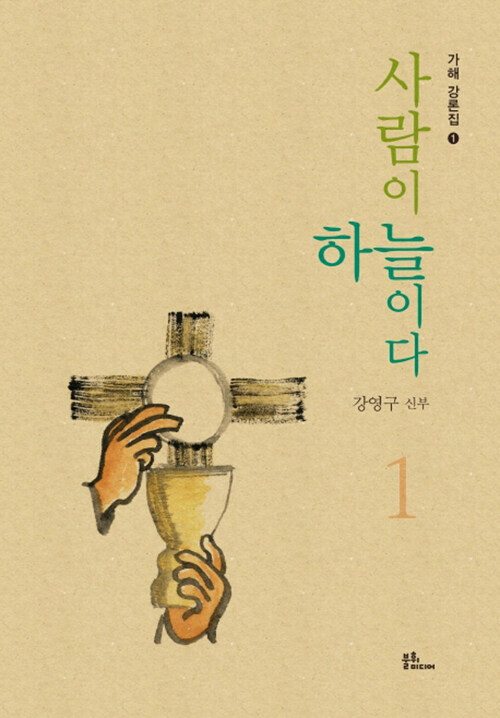



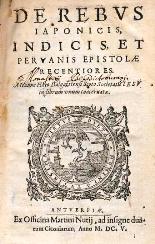 Hay, John. De Rebus Japonicis, Indicis, et Peruanis epistolae recentiores. Martinus Nuntius, Antwerp. John Hay (1546-1607), a Scottish Jesuit, compiled 55 letters, written between 1577 and 1601. The largest part of the letters are about Jesuits activities in Japan and Korea.
Hay, John. De Rebus Japonicis, Indicis, et Peruanis epistolae recentiores. Martinus Nuntius, Antwerp. John Hay (1546-1607), a Scottish Jesuit, compiled 55 letters, written between 1577 and 1601. The largest part of the letters are about Jesuits activities in Japan and Korea.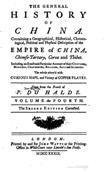 Du Halde, J. B.
Du Halde, J. B. 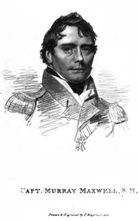 M’Leod, John.
M’Leod, John. 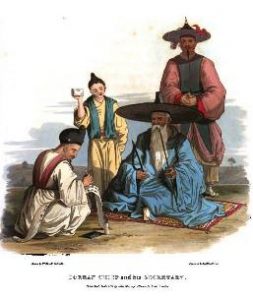 Hall, Basil.
Hall, Basil.  Hall, Basil.
Hall, Basil. 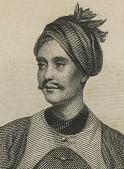 Gützlaff, Karl Friedrich August. J
Gützlaff, Karl Friedrich August. J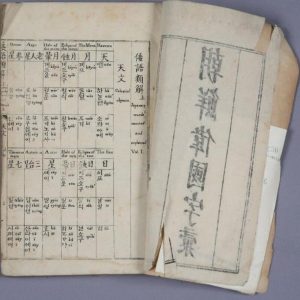 Medhurst, Walter Henry.
Medhurst, Walter Henry. 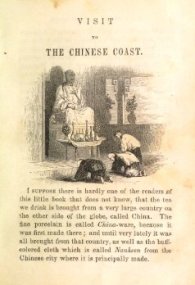 Gützlaff, Karl Friedrich August.
Gützlaff, Karl Friedrich August.  Wylie, Alexander.
Wylie, Alexander.  Williamson, Alexander.
Williamson, Alexander. 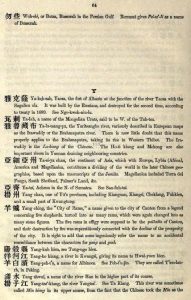 Smith, F. Porter.
Smith, F. Porter. 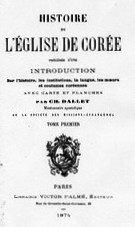 Dallet, Claude Charles.
Dallet, Claude Charles. 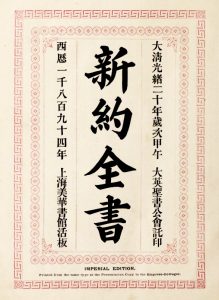
 Ross, John.
Ross, John. 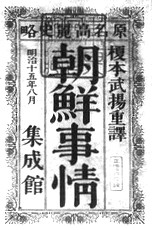 Takeaki, Enomoto (榎本武揚).
Takeaki, Enomoto (榎本武揚). 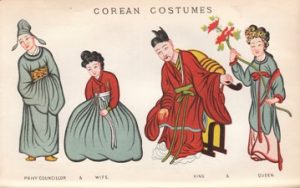 Ross, John.
Ross, John. 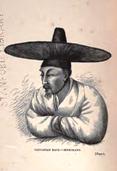 Oppert, Ernst.
Oppert, Ernst. 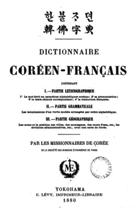 Ridel, F. C. ed. 韓佛字典 Hanbul chadyŏn:
Ridel, F. C. ed. 韓佛字典 Hanbul chadyŏn: 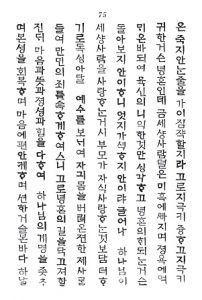 Ross, John. Korean Speech with Grammar and Vocabulary. ShanghaiL Kelly &
Ross, John. Korean Speech with Grammar and Vocabulary. ShanghaiL Kelly & 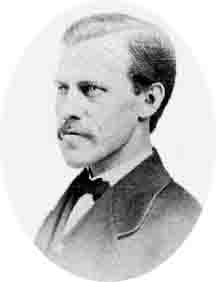 Griffis, William E.
Griffis, William E. 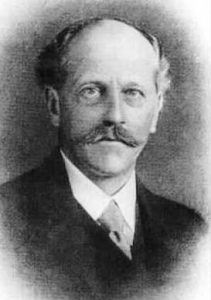
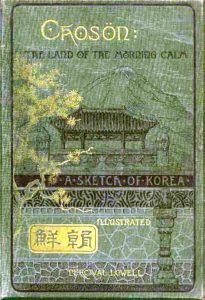 Lowell, Percival.
Lowell, Percival.  James, Henry E. M. The Long White Mountain or A Journey in Manchuria. London: Longmans.
James, Henry E. M. The Long White Mountain or A Journey in Manchuria. London: Longmans.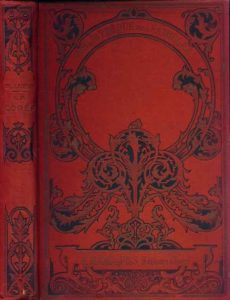 Launay, Adrien. La Coree et Les Missionnarires Francais, with intro-introduction by Chasles Dallet.
Launay, Adrien. La Coree et Les Missionnarires Francais, with intro-introduction by Chasles Dallet.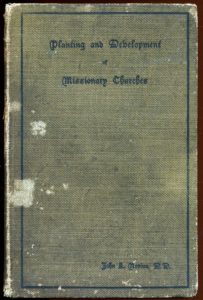 Nevius, John L.
Nevius, John L. 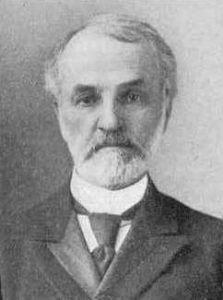 Ellinwood, Frank F.
Ellinwood, Frank F. 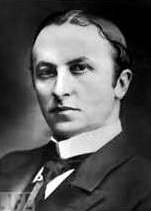 Curzon, George N.
Curzon, George N. 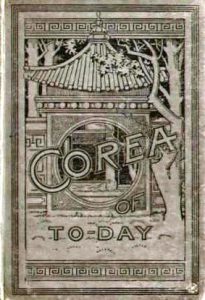 Gilmore, William G.
Gilmore, William G. 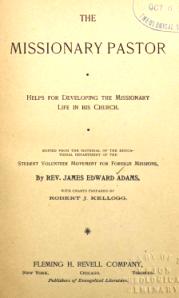 Adams, James Edward.
Adams, James Edward. 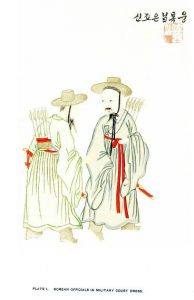 Culin, Stewart.
Culin, Stewart. 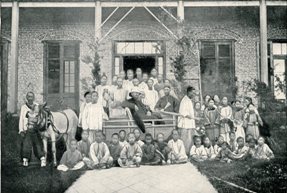 Nevius, Helen S. C.
Nevius, Helen S. C. 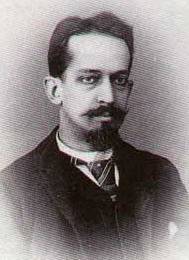 Courant, Maurice. Bibliographie coréene: tableau litteraire de la Corée. 2 vols. Paris: E. Leroux, 1894 & 1896.
Courant, Maurice. Bibliographie coréene: tableau litteraire de la Corée. 2 vols. Paris: E. Leroux, 1894 & 1896.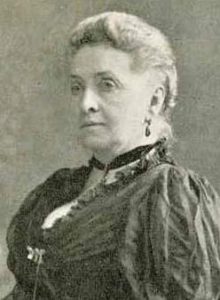 Bishop, Bird.
Bishop, Bird. 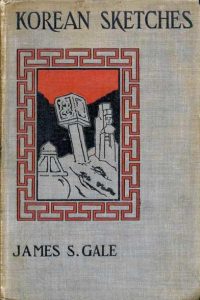 Gale, James S.
Gale, James S. 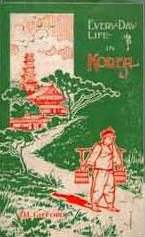 Gifford, Daniel L.
Gifford, Daniel L. 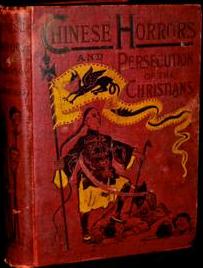 Northrop, Henry Davenport.
Northrop, Henry Davenport. 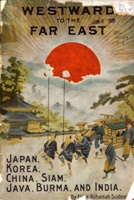 Schidmore, Eliza R.
Schidmore, Eliza R.  Barnes, Annie Maria.
Barnes, Annie Maria. 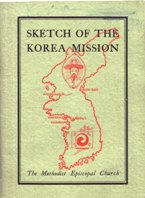 Appenzeller, H. G.
Appenzeller, H. G. 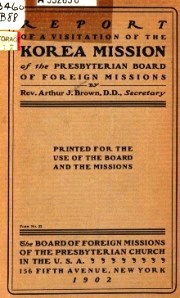 Brown, Arthur J.
Brown, Arthur J.  Constance, J. D. Taylor.
Constance, J. D. Taylor. 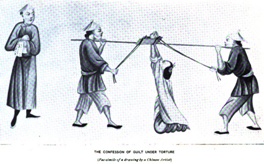 Henry, Norman.
Henry, Norman. 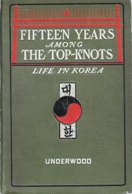 Underwood, Lillias H.
Underwood, Lillias H.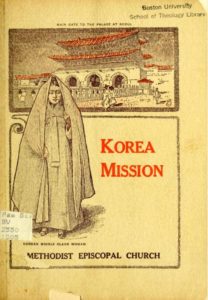 Appenzeller and Jones,
Appenzeller and Jones, 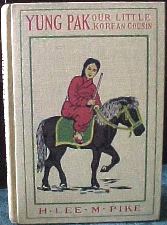 Pike, Henry Lee Mitchell.
Pike, Henry Lee Mitchell. 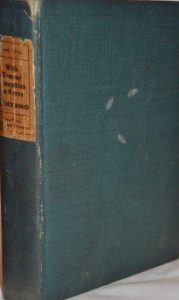 Underwood, Lillias H.
Underwood, Lillias H. 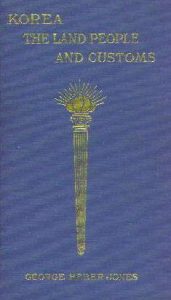 Jones, G. Heber.
Jones, G. Heber.  Harris, Merriman C.
Harris, Merriman C. 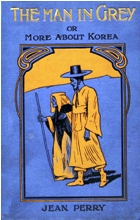 Perry, Jean. The Man in Grey. London: S. W. Patridge & Co.
Perry, Jean. The Man in Grey. London: S. W. Patridge & Co. Perry, Jean. Uncle Mac the Missionary. London: Patridge.
Perry, Jean. Uncle Mac the Missionary. London: Patridge. Austin, H. H.
Austin, H. H.  Ch’oe, Pyônghôn. 聖山明鏡 Sôngsan myônggyông [The Bright Mirror in the Holy Mountain]. Seoul: 貞洞皇華書齋. The first Korean book on comparative religion. 2nd edition came out in 1911.
Ch’oe, Pyônghôn. 聖山明鏡 Sôngsan myônggyông [The Bright Mirror in the Holy Mountain]. Seoul: 貞洞皇華書齋. The first Korean book on comparative religion. 2nd edition came out in 1911. Davis, George T. B.
Davis, George T. B. 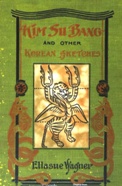 Wagner, Ellasus Canter.
Wagner, Ellasus Canter.  Coulson, Constance J. D.
Coulson, Constance J. D. 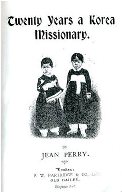 Perry, Jean. Twenty Years a Korea Missionary. London: Patridge.
Perry, Jean. Twenty Years a Korea Missionary. London: Patridge.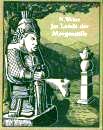 Weber, Norbert. Im Lande der Morgenstille: Reise-Erinnerungen an Korea. by a German Benedictine monk on Korea, Korean RC mission, Unsan Godl Mine, etc.
Weber, Norbert. Im Lande der Morgenstille: Reise-Erinnerungen an Korea. by a German Benedictine monk on Korea, Korean RC mission, Unsan Godl Mine, etc.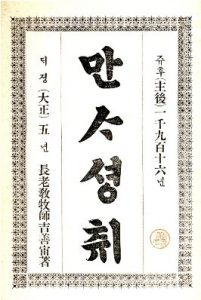 Kil, Sunju. Mansa sôngchwi [The Attainment of All Things]. Pyongyang: Kwangmyông sôgwan.
Kil, Sunju. Mansa sôngchwi [The Attainment of All Things]. Pyongyang: Kwangmyông sôgwan.  Clark, Charles A.
Clark, Charles A. 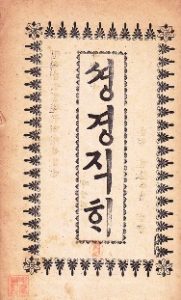 경성부명치정천주교당, 성경직해
경성부명치정천주교당, 성경직해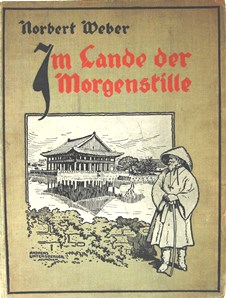 Weber, Norbert. Im Lande der Morgenstille. Missionsverlag St. Ottilien.
Weber, Norbert. Im Lande der Morgenstille. Missionsverlag St. Ottilien.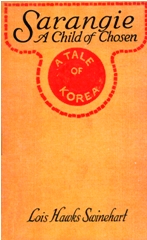 Swinehart, Lois Hawks.
Swinehart, Lois Hawks. 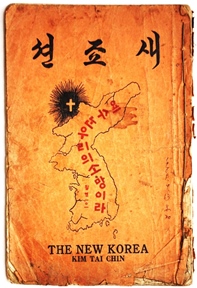 Kim Taejin. The New Korea. Seoul: KRTS.
Kim Taejin. The New Korea. Seoul: KRTS.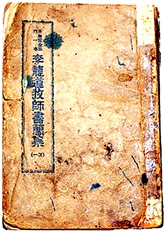 Pyon, Chongho ed. Letters of Rev. Yi Yongdo 이용도목사서한집, 1934
Pyon, Chongho ed. Letters of Rev. Yi Yongdo 이용도목사서한집, 1934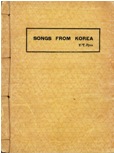 Pyun, Youngtae. Songs from Korea. Seoul.
Pyun, Youngtae. Songs from Korea. Seoul. Korea Mission of WFMS,
Korea Mission of WFMS,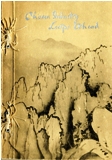 Foreign Affairs Department, Chosen Industry Leaps Ahead. Seoul: Government-General of Chosen.Taisho SHashin Kogeisho Co.
Foreign Affairs Department, Chosen Industry Leaps Ahead. Seoul: Government-General of Chosen.Taisho SHashin Kogeisho Co.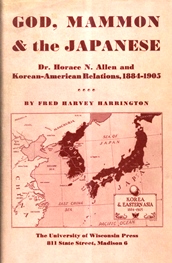 Fred Harvey Harrington,
Fred Harvey Harrington, 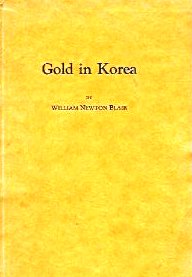 Blair, William N. Gold in Korea. New York: PCUSA.
Blair, William N. Gold in Korea. New York: PCUSA.